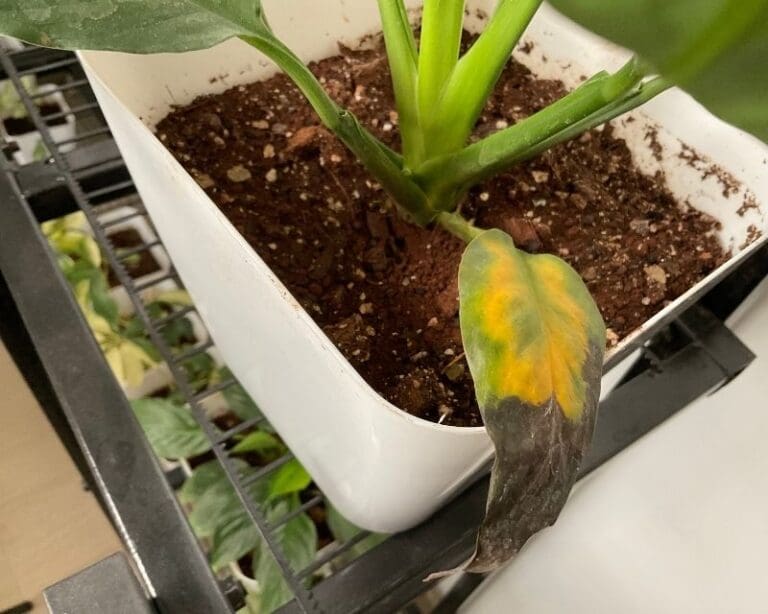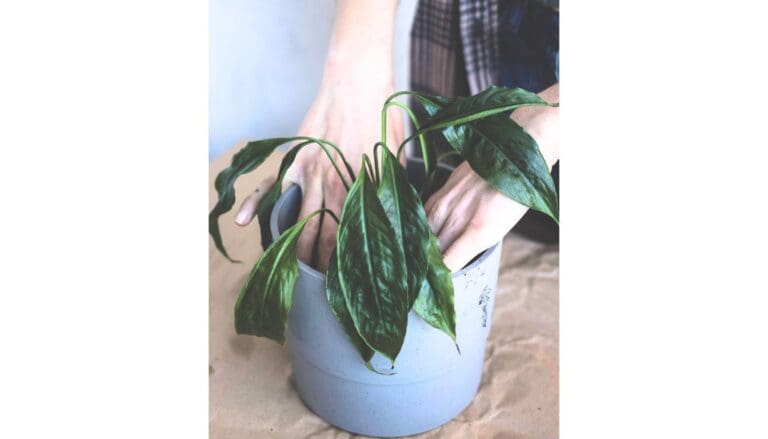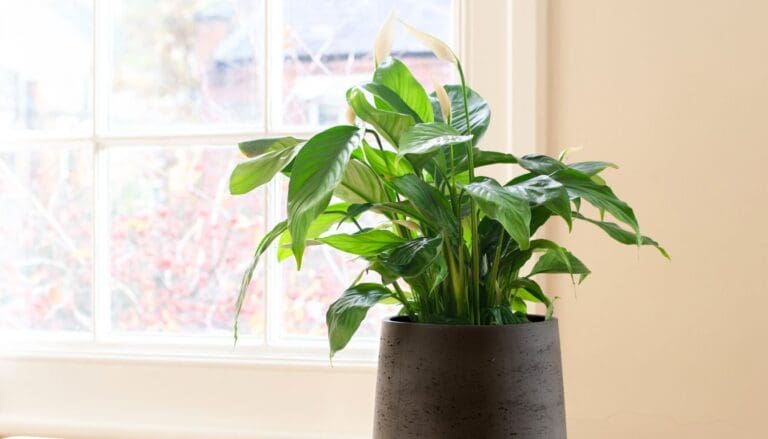10 Must-Know Summer Growth Tips for Healthy Indoor Plants
I love watching my indoor plants really take off in the summertime. With a few simple care tweaks, it’s honestly not hard to help them thrive when it’s warm out.
Having the right summer growth tips makes life so much easier if you want your plants to stay healthy and look great.
When I put in the effort, my plants repay me with fresh leaves and pops of color. I’m always on the lookout for new ideas to make sure my little indoor jungle does well all summer.
Please note: Simplify Plants is reader-supported. As an Amazon Associate, I earn from qualifying purchases made by our readers with no extra cost added to you all! Some links in the post are affiliate links and I get a commission from purchases made through links in the post.
1) Increase natural sunlight exposure near windows

I try to move my indoor plants closer to the windows once the days get longer. More natural sunlight just makes them perk up so much.
Sunlight gives them the boost they need for new leaves. I keep an eye on which windows get the best light, especially in the early hours.
East-facing windows are usually my go-to—they get that gentle, bright morning sun. If I’ve got plants that soak up light, I’ll put them right up close.
The ones that prefer it a bit dimmer get a spot a little further away. That way, every plant gets what it likes best.
I open the curtains as soon as I’m up. The more light, the better, honestly.
If I spot leaves getting crispy or brown, I’ll move the plant back a bit. Too much direct sun can really do a number on some plants.
I shuffle my plants around every week or so, just to see if they’re happier in a new spot. Sometimes it makes all the difference.
Natural sunlight in summer really brings out the best in my plants. There’s something satisfying about seeing them look fuller and more vibrant.
2) Water plants early in the morning

I always water my indoor plants early in the morning. They get a chance to drink up before the heat kicks in.
When I do this, the soil just stays moist longer. Less water evaporates, so the roots actually get what they need.
Morning watering is just better for plant health. Leaves dry off faster in the sun, which means less mold or disease.
I use room temp water—cold water feels like a shock to the roots, so I let it sit overnight if I remember. It’s a small thing, but worth it.
Morning is also when I notice issues—wilting leaves, weird spots, or pests. It’s the best time to catch problems early.
If I forget and water late, sometimes the leaves stay wet all night. That’s just asking for fungus.
Watering in the morning fits into my routine. It only takes a few minutes, and honestly, it’s a nice way to start the day.
Sticking to morning watering really does help my plants look their best. If I slip up, I just try again the next day.
3) Use a balanced liquid fertilizer biweekly

I give my plants a boost with balanced liquid fertilizer every couple of weeks in summer. They need the extra nutrients for lush leaves and sturdy stems.
I look for a fertilizer with equal numbers—like 10-10-10 or 20-20-20—so it’s simple and my plants get a bit of everything.
I always follow the directions on the label. Too much can burn the plants, so I go easy.
After feeding, a gentle watering helps the fertilizer soak in. That way, the roots get the good stuff quickly.
Regular feeding like this really keeps my plants green and strong. I usually spot new growth and healthier leaves after a few weeks.
Some plants are fussier than others, so I keep an eye out for yellowing or burnt tips. If I see anything weird, I adjust.
Biweekly fertilizing is honestly my not-so-secret trick for happy indoor plants in summer!
4) Maintain indoor humidity around 40-60%

I aim for indoor humidity between 40% and 60%—that’s the sweet spot for most plants. Summer air conditioning can make things way too dry.
A basic humidity meter helps me keep tabs on things. They’re not expensive and save a lot of guesswork.
If it’s too dry, I’ll put a tray of water near my plants or run a humidifier. Grouping plants together works, too—they share moisture.
If it gets muggy, I crack a window or use a fan. That keeps the air fresh and stops mold.
Getting humidity right means no more brown tips or sad, wilted leaves. I check the meter, especially on hot or rainy days.
When humidity is in the right range, my plants just look happier. The leaves stay healthy and growth is steady.
5) Rotate plants weekly for even growth
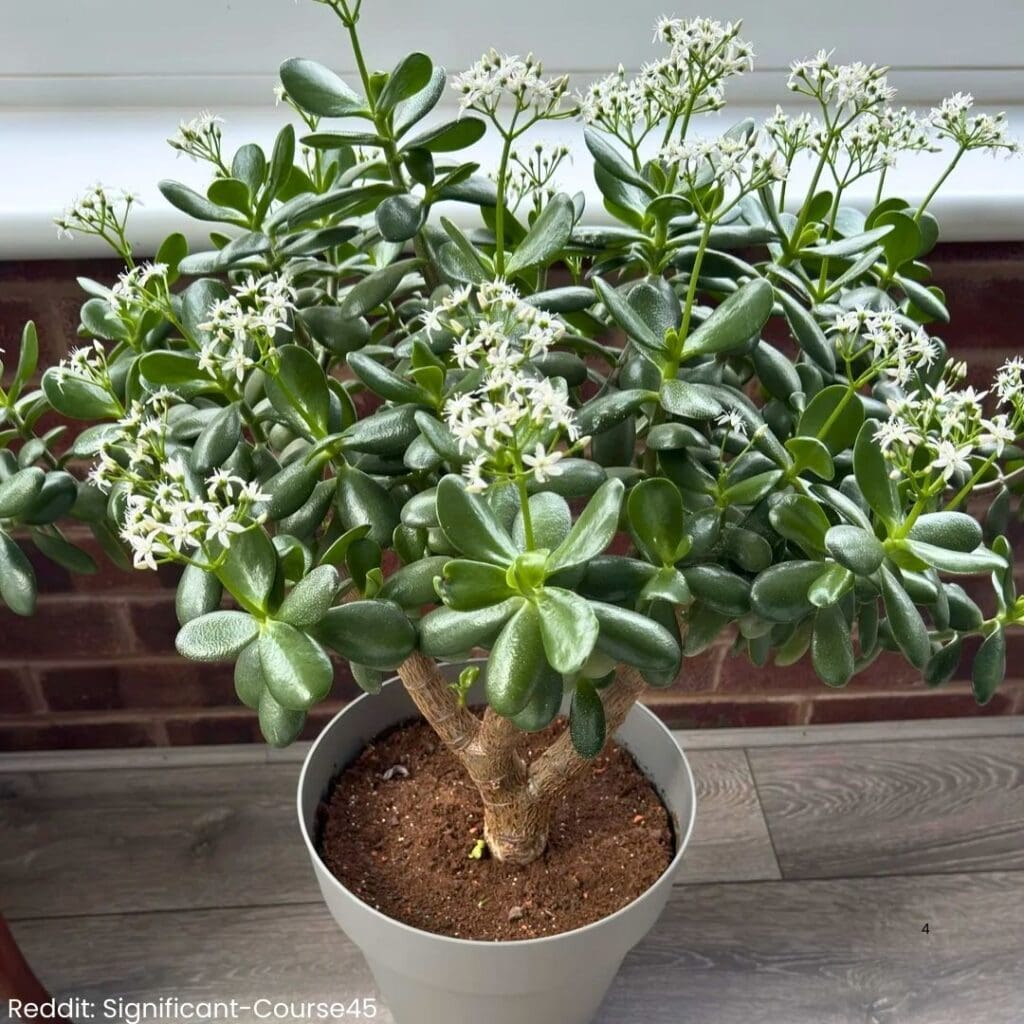
I make it a point to rotate my indoor plants every week. It’s a quick habit that helps every side get a fair shot at the sun.
Plants will lean toward the light if you let them, so I turn their pots a little each week. That keeps them from growing lopsided.
It’s simple but it works—no more sparse, uneven plants. All sides get their moment in the sun.
I’ve set reminders on my phone so I don’t forget. It literally takes seconds, and it pays off big time in the summer.
Even for big pots, I use both hands and turn them gently. For the little ones, I just spin them around.
Rotating gives me a chance to check for dry soil or sad leaves, too. Spotting problems early is always a win.
Even if a plant sits right by a window, rotating helps the far side catch up. Weekly turns keep my plants looking balanced and healthy.
6) Prune yellow or dead leaves promptly
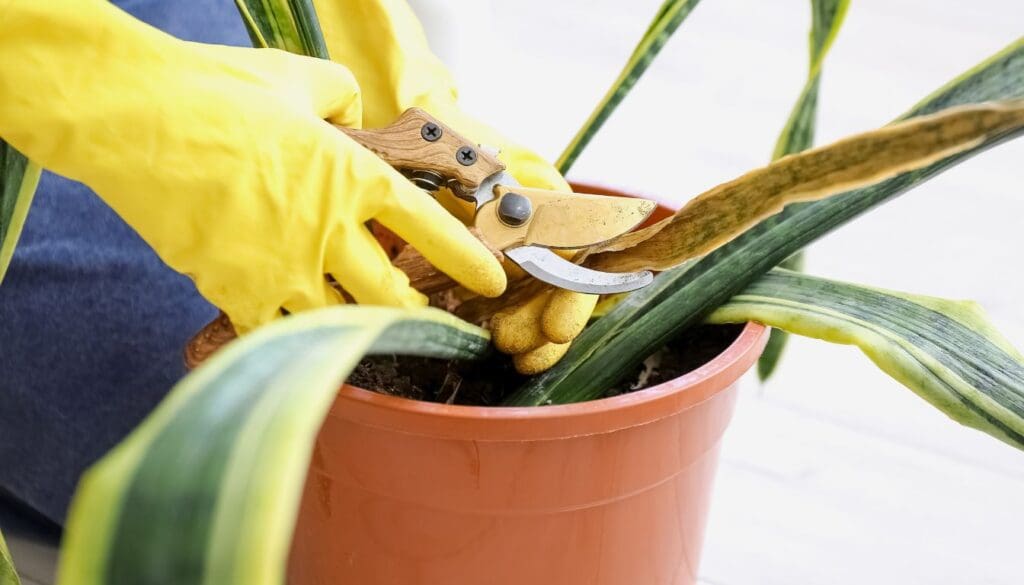
I’m always on the lookout for yellow or dead leaves, especially when it’s hot out. Snipping them off keeps my plants healthy and looking good. Dead leaves attract pests and can spread disease if you’re not careful.
When I spot yellow leaves, I grab clean scissors or pruning shears. I cut close to the stem, but I’m careful not to nick healthy parts.
Pruning makes the plant look tidier, too. It also lets in more light and air, which boosts growth.
If there are just brown edges, sometimes I’ll trim only the crispy bits. I check if the whole leaf needs to go or just a part.
Mushy stems or weird spots? I cut those off right away. It’s better to be safe than sorry.
I always clean my scissors with rubbing alcohol before and after. No need to spread germs.
I try to prune once a week during summer. It doesn’t take long, and my plants always look brighter afterward.
Catching yellow or dead leaves early is just part of my routine now. It’s one of those easy things that really pays off.
7) Repot plants if roots outgrow the pot

I check my plants’ pots every summer. If I see roots poking out or circling the top, that’s my cue to repot. Crowded roots can’t soak up water or nutrients properly.
I pick a pot that’s just a bit bigger—maybe 1-2 inches up. Drainage holes are a must. Fresh potting mix gives the plant a fresh start.
When I repot, I loosen the roots gently, then nestle the plant in its new home. I fill in with soil and water it in.
Afterwards, I keep the plant out of direct sun for a few days. It helps them recover from the move.
Most plants bounce back quickly, even if they look droopy at first. Repotting gives them space to grow and keeps them healthy.
8) Use neem oil to prevent pest infestations
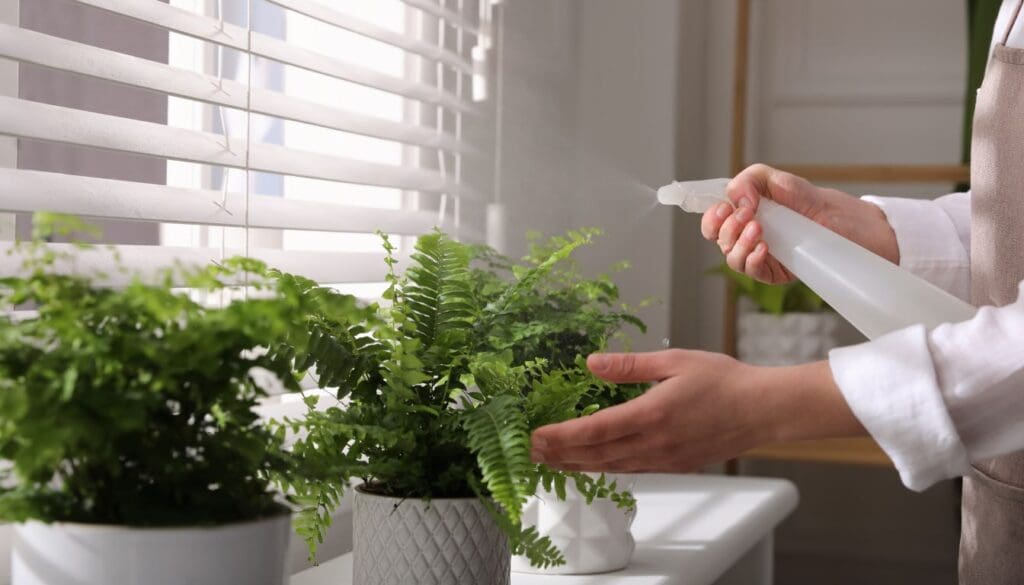
I always keep neem oil handy in summer. It’s a natural way to keep pests like aphids and spider mites in check.
I mix a little neem oil with water and a bit of liquid soap. Then I spray it on the leaves, especially underneath where bugs like to hide.
I do this every couple of weeks—just to be safe. Neem oil is gentle if you use it right, but I always test a small spot first.
Too much can spot the leaves, so I go easy. If I see bugs or sticky stuff, neem oil usually sorts it out.
I avoid spraying in direct sun to protect the leaves. Regular use helps stop infestations before they get out of hand.
Using neem oil is one of those easy, natural steps that keeps my indoor plants happy all summer.
9) Ensure good air circulation around plants

I always try to give my indoor plants plenty of fresh air. Good air flow helps keep away mold, mildew, and pests.
It also lets plants breathe a bit easier. I don’t crowd my plants together—leaving space between pots really helps air move around the leaves.
Even just a few inches can make a difference. I like to open windows when I can or use a fan on low, especially if the room feels stuffy.
But I never aim a fan straight at my plants. Too much wind just dries them out or messes up the leaves.
Rotating my plants every week is a little trick that works. It helps them get light all over and keeps the air moving.
I also wipe leaves gently to keep them dust-free. Dust can block air and light from reaching the leaf surface.
If I notice a plant’s soil staying wet too long, that’s a hint air flow isn’t great. Sometimes I just move things around or pop a small, quiet fan nearby.
With better air circulation, my plants honestly just look happier. Healthy airflow means stronger plants and fewer headaches for me down the road.
10) Use grow lights during cloudy days

When the sun disappears behind clouds, my indoor plants don’t always get the light they need. That can slow their growth or make them look a bit sad.
I turn to grow lights so my plants still get their daily dose. These lights mimic sunlight and keep the plants growing.
On extra gloomy days, I’ll flip on the grow lights for several hours. I usually set them above my plants so the leaves get direct light.
Not all grow lights are created equal. I check the packaging to make sure I’m picking the right one for my leafy crew.
Most of my houseplants do fine with white or full-spectrum LEDs. I keep the lights close enough to help, but not so close the leaves burn.
Too far away, and the plants stretch out and get leggy. Using grow lights on cloudy days helps my plants stay green and perky, even if the weather’s not cooperating.
If my plants look pale or just aren’t growing, I know it’s time to check the light situation. Adding a grow light can really turn things around.
Understanding Indoor Plant Needs in Summer
During summer, indoor plants face new challenges—extra sunlight and warmer temps can be tough. I pay close attention to light and water so my plants stay happy and keep growing.
Impact of Increased Sunlight
Summer sunlight is stronger and sticks around longer each day. Sometimes my plants get blasted with direct sun through the windows, and I’ve seen leaves dry out or burn.
I’ll move plants away from hot afternoon windows or pull the curtains to soften the light. Some plants, like succulents and cacti, seem to love the extra brightness and just take off.
Leafy houseplants, though, usually want gentler, indirect light. If leaves start turning brown or pale, that’s a sign of too much sun.
Rotating my plants every week helps them grow straight and get light on all sides. It’s a simple fix for leaning plants.
Changes in Watering Requirements
Hotter air and bright light dry out soil faster than you’d think. I check the soil with my finger about an inch down—if it’s dry, time to water.
Overwatering is still a risk in summer, so I don’t just water on autopilot. I try to water early in the day so leaves dry off and mold doesn’t get a chance.
Plants in sunny spots, like ferns or moisture-lovers, sometimes need more water than usual. I keep a chart on my phone to remember who needs what—otherwise, I’d definitely forget.
Supplemental Strategies for Lush Growth

To keep my indoor plants thriving in summer, I focus on better soil and airflow. A few small upgrades make a big difference.
Upgrading Potting Mix for Better Drainage
At the start of summer, I always check my plant’s potting mix. Good drainage is key—it lets roots breathe and keeps rot at bay.
Regular potting soil can get packed down and soggy over time, which is bad news for roots. I like to mix in extra materials for better drainage.
Here’s what I use:
- Perlite: Light, white rocks that keep soil fluffy
- Coco coir: Holds some moisture but doesn’t get compacted
- Pine bark: Adds structure and helps air flow
Mixing about one-third perlite or pine bark with soil usually does the trick. For succulents and snake plants, I go heavier on the perlite.
After repotting, I water lightly to help roots settle in. It’s a quick upgrade that pays off.
Supporting Humidity and Air Circulation
Summer heat dries out indoor air, which can stress plants. I keep an eye on humidity levels, especially with ferns or calatheas.
Grouping plants together helps—leaves release water vapor and make a little humid zone. I’ll use a small humidifier if the air feels desert-dry.
Misting gives a quick boost, but I don’t go overboard since too much can invite fungus. Air circulation is just as important.
I set up a fan nearby (not blowing right on the plants) to keep air moving. It helps prevent mold and keeps everything looking fresh.
Frequently Asked Questions
People ask me a lot about houseplant care in summer. Here are some real-life answers about starting out, sunlight, watering, and more.
How can I start growing plants indoors if I’m a beginner?
I’d say start with easy plants like snake plants or pothos. They’re forgiving and can handle different light.
A good potting mix and a pot with drainage holes are must-haves. Light, water, and patience—that’s really what you need at first.
What are some common types of houseplants and the best ways to care for them?
Pothos, spider plants, and peace lilies are my usual go-tos. They’re tough and adapt to most rooms.
I keep them near windows for natural light. Regular watering (but not drowning them) and a biweekly dose of balanced liquid fertilizer keep them happy.
Can you grow plants indoors without direct sunlight, and if so, how?
Absolutely, you can grow lots of plants in low light! I use shade-loving plants like ZZ plants or ferns a little farther from the window.
Sometimes, I’ll add grow lights to help out when sunlight just isn’t enough.
What are the top care tips for maintaining healthy houseplants during the summer?
I keep my plants close to bright windows but out of the direct afternoon sun—burned leaves are no fun.
Watering in the morning is my routine. I use a humidity tray or mist to keep things around 40-60% humidity.
Rotating plants weekly helps them grow evenly and not get lopsided.
What is the best way to water indoor plants in the hot summer months?
I always check the soil by touch—if it’s dry just below the surface, I water. Early morning is best so plants can soak it up before it gets hot.
I avoid watering late since wet leaves overnight can cause fungus. Proper drainage is a must for healthy roots.
What are some effective methods for potting and repotting plants at home?
I always go for pots with drainage holes—honestly, it just makes life easier and prevents soggy roots.
When it’s time to repot, I usually choose a pot that’s only a little bigger than the last one.
I’ll gently tease apart the roots (sometimes they’re a bit stubborn) before setting the plant in its new home.
Fresh potting mix is a must, and I make sure to give the plant a good drink afterward.
Recommended Garden Supplies
| Product Image | Our Recommended Gardening Supplies | Check Offers! |
|---|---|---|
Top Top
Top
Top
Top
Top
Top
Top
Top | rePotme Houseplant and Tropical Classic Potting Soil Mix | Check Offer On Amazon |
 Top
Top
Top
Top
Top
Top
Top
Top | Espoma Organic Indoor Plant Food | Check Offer On Amazon |
 Top
Top
Top
Top
Top
Top
Top
Top | GooingTop LED Grow Light 6000K Full Spectrum Clip Plant Growing Lamp | Check Offer On Amazon |
 Top
Top
Top
Top
Top
Top
Top
Top | Soil Moisture Meter | Check Offer On Amazon |
 Top
Top
Top
Top
Top
Top
Top
Top | Govee Hygrometer Thermometer, Bluetooth Enabled! | Check Offer On Amazon |
 Top
Top | LEVOIT Humidifiers for Large Room(Best For Plants) | Check Offer On Amazon |
 Top
Top
Top
Top
Top
Top
Top
Top | Upgraded DIY Automatic Drip Irrigation Kit, 15 Potted Houseplants Support | Check Offer On Amazon |
 Top
Top
Top
Top
Top
Top
Top
Top | Stainless Steel Heavy Duty Gardening Tool Set | Check Offer On Amazon |
 Top
Top
Top
Top
Top
Top
Top
Top | Bonide Insecticidal Soap | Check Offer On Amazon |
 Top
Top
Top
Top
Top
Top
Top
Top | Bonide 32 oz Spray Neem Oil for Organic Gardening | Check Offer On Amazon |
 Top
Top
Top
Top
Top
Top
Top
Top | Garden Safe Fungicide | Check Offer On Amazon |



